It is not just the end of the line for the 300 sedan – which Chrysler has just announced will be retired after the end of the 2023 model year. It may also – by dint of that – be the end of the line for Chrysler, too. For once the 300 is gone, the only remaining Chrysler model will be the Pacifica minivan.
You can’t maintain an entire brand – or dealer network – on the strength of just one model. Especially if that model is a minivan.
Maybe there will be new Chryslers coming. But none will be like the one that’s about to go away. And that’s very sad.
But the good news is it’s going out with a bang.
The 300 C is a last-hurrah version of Chrysler hugely successful 300 sedan, which almost singlehandedly revived the brand in the early 2000s, when it first appeared. It was the first rear-drive, V8-available Chrysler car since the very early ’80s. It was – and is – big, heavy powerful and brooding.
And people loved it.
They still do. But Chrysler has been forced to stop building the car – along with its Dodge-badged siblings, the Charger sedan and Challenger coupe – because it is becoming too difficult (and too expensive) to insert these square pegs into the round holes of government-mandated fuel economy and carbon dioxide “emissions” standards without fundamentally changing them into something entirely different. 
Which is exactly what is happening – as regards the Charger, at least. An electric one is coming, even though the market didn’t ask for one. So there may be an electric 300 coming, too.
But it won’t be the same. And arguably, it won’t be a 300 – electric cars having nothing in common with the cars that bore that name up to now.
Unlike this last hurrah.
Which comes in the person of the 300 C – the letter denoting, as it always has in this context, the most muscular version of this broad-shouldered American heavyweight. It will be the first – and last – 300 to be powered by a 6.4 liter version of Chrysler’s mighty Hemi V8 engine, essentially the same engine that is available in the R/T versions of the Charger and Challenger as part of the “392” package – the latter number denoting the size of the big V8 in American cubic inches rather than metric liters.
It will be made in limited numbers – only 2,000 of them will ever be produced – each with a base price of $55,000. This is about $15,000 above the base price of a standard-issue 300, equipped with a V6 engine and actual transaction prices – what people pay to get one – are apt to be much higher as these are, truly, the last of the line and shall never pass this way, again.
What’s New
The C package – with the 6.4 liter/392 cubic inch V8 engine as its centerpiece – is a new (and final) option for the 300.
What’s Good
The last big American sedan you can still buy new.
The biggest-engined version of this sedan, ever.
Certain to appreciate in value.
What’s Not So Good
Is already appreciating in value. Expect to pay full MSRP plus a lot more than that.
Only a relative handful will be built.
Being forced off the market.
Last year, the biggest engine you could get in a new 300 was the 5.7 liter version of Chrysler’s might Hemi V8. There was no C version of the 300 last year.
This year – for the final year – the C makes a brief return. Under its long (and wide) hood is a 6.4 liter version of the Hemi, which is the biggest version of Chrysler’s (modern) Hemi. It is bigger than the more notorious 6.2 liter Hemi V8 that makes 700-plus horsepower in the Hellcat versions of the Charger and Challenger, courtesy of a supercharger that more than makes up for the lesser displacement.
But the 6.4 is not lacking in the horsepower department, either.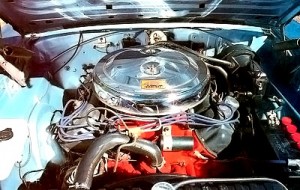
This last-of-the-big ones makes 485 horsepower – far more power than the smaller 5.7 liter Hemi, which summons a comparatively modest-sounding 363 horsepower. The 6.4’s power is also a lot more power than the grand-daddy 426 Hemi of the late ’60s and early ’70s, which powered a handful of the quickest and fastest Chryslers, Dodges and Plymouths of those times – as some will remember.
That Hemi, interestingly, was a race car engine Chrysler detuned and installed in a few of its street-production cars to qualify for use in race cars. It was not an easy engine to live with, being fundamentally a race car engine. And – by the standards of the 392 engine – not a particularly impressive performing one.
Most Street Hemi (as the 426 Hemi was known) Chryslers, Dodges and Plymouths from that era got to 60 in the mid-high five second range, which was extremely quick 50-something years ago, especially in relation to the average car-of-the-time’s ten-plus seconds to 60 timeslip (about on par with a new Prius).
The 392 Hemi get the massive – and massively heavy – 2023 C to 60 in 4.3 seconds and through the quarter-mile in 12.3 seconds, utterly blowing away its namesake ancestors. With the AC on.
And it gets twice the miles-per-gallon, too.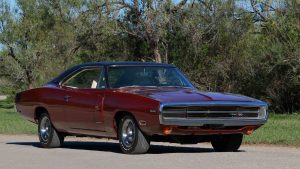
Official numbers weren’t available when this review was written in early January; however, we can get a very good idea of the Hemi 392 C’s appetite by referring to the appetite of its essentially-the-same sister vehicle, the Charger sedan, which carries an EPA rating of 15 city, 24 highway – the latter in italics to emphasis the astounding highness of that figure, for a car of this kind.
A ’70 Hemi-powered Challenger might make 15 . . . on the highway. If you kept the speed under 55. Anything faster and the car would be drinking premium at the rate of 8 or 9 miles per gallon, chiefly because in those days, high-performance cars had aggressive final drive ratios and did not have overdrive transmissions to compensate for them. Thus, the car was very quick – for its era – but its engine was revving much faster at much lower speeds than today’s high-performance cars, which do have overdrive transmissions, to compensate for their aggressive final drive gearing.
At 70, the 300 C’s engine is hardly idling notwithstanding it 3.09 final drive gearing – because it has multiple overdrive gearing in its eight speed automatic transmission. At 70, a ’70 Hemi Charger’s engine was screaming at something like 3,800 RPM. And that is a big part of the reason why it burned so much gas – while the new one (and last one) doesn’t.
Americans – average Americans, not just the rich ones – used to commonly drive big, rear-drive cars like the 300. But such cars have been systematically winnowed from the showroom, chiefly via federal gas mileage mandatory minimums that big, heavy, rear-drive cars cannot easily “comply” with. The layout became the almost exclusive indulgence of affluent people who could afford a Mercedes or a BMW or a Lexus.
The along came Chrysler.
It alone had the audacity to re-introduce the kind of car average Americans used to commonly drive because they could afford to. The C version of the 300 isn’t that, of course – though it’s still a relative deal considering that $55k just barely buys you a four cylinder-powered BMW 5 or Mercedes E350.
But the as-it-comes 300 is. Same car, same layout. Same wonderful heft and commanding feel of the road. And that’s for $33k. The standard 3.6 liter V6 is also huge – compared with the 2.0 liter fours that you get in the $50k-plus BMWs and Benzes.
The C version of the 300 is a kind of ferocious last salvo. Think of the cornered Bismarck, hounded by practically every ship in the Royal Navy, firing her 15 inch guns until the barrels glowed red and the last shell was spent.
But there will be 2,000 of these prowling the open roads.
If you are among the fortunate few who get your hands on one, you will have the ride of your life in a car you’ll want to drive every day – which is not something you could say about the Hemi-powered Chryslers, Dodges and Plymouths that were available before the last Extinction Level Event back in the early ’70s. They gave you the ride of your life, too – but you probably wouldn’t want one every day. The price you paid for 426 horsepower was a choppy idle, easily fouled spark plugs and general unhappiness at anything less than pedal-to-the-metal.
The 485 horsepower C idles as smoothly as the V6. Does not foul plugs. Is very happy to just trundle along. In fact, it excels at the latter. It is better than the V6 in that department because of the combination of the always-available abundance of seemingly effortless power, accompanied by the deep-down bass rumble a V6 cannot produce. That rumble is comforting in the manner of the purr of a cat on your lap. But in this case, there’s a tiger under the hood.
It is so fast when called upon you hardly have time to realize just how fast it is. And this is made more enjoyable by the surreality of something as fast as this is that is as gloriously big and hefty as it is. Also as comfortable – in keeping with the tradition of C-badged big Chryslers. Some consider them to be the original muscle cars – but they differed from the latter in being . . . comfortable (and luxurious) as opposed to merely brutal and very fast.
This one’s both and if you get a ride in one you will have a revelation – about just how good we’ve had it. About how much better it might have been. And about what they are about to take away.
Americans loved – and used to commonly drive – big cars like this car because such cars are also practical cars. Unlike the general run of front-drive, downsized cars that supplanted them – and which are all gone now, too. Because they were impractical cars. Too-small in the back and especially the trunk, which couldn’t hold very much. This is why crossovers have largely replaced cars – and why Americans who want a big, roomy car like the 300 have moved into SUVs.
The latter is hilariously ironic in that the whole point of the government’s regulatory juggernaut against the big American car has resulted in the even bigger American SUV.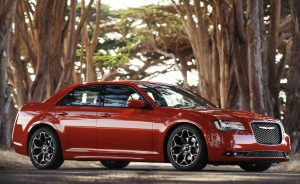
The 300 was – well, still is, for a little while longer – the last American car with almost as much spreading out room in the back (40.1 inches of legroom) as up front (41.8) inches and a properly sized 16.3 cubic foot trunk. It actually does “seat five comfortably” – some will remember the old ad jingle used by a Japanese car company whose little cars did not “seat five comfortably,” unless three of them were kids under 12. And you do not need another car to carry their stuff, either.
But it is the attitude of this car that has made it not only popular but iconic – and while it’s still available new. It lacks the angry Samurai/gaping goldfish/Cylon centurion face you see affixed so commonly to crossovers to make them look menacing.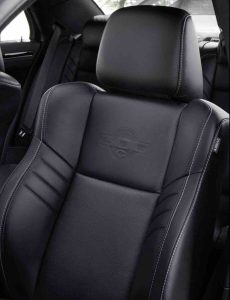
The 300 just is.
In the manner of someone who knows he is – that he can be – and for exactly that reason doesn’t need to make angry faces. It is also elegant – almost limo-like – which is a function of its exceptionally long (120 inch) wheelbase, or the distance in between the front and rear axle centerlines. To put that in some context, the wheelbase of a BMW 5 sedan is only 117.1 inches and it is only 195.8 inches long vs. 198.6 for the 300.
What you are getting here, in other words, is an almost full-sized luxury sedan for less than the cost of a mid-sized luxury-brand sedan.
And that goes a long way toward explaining why the 300 has sold so well for so long. To put a finer point on that, the 300 has continued to sell well despite not having been “updated” since – wait for it – 2011.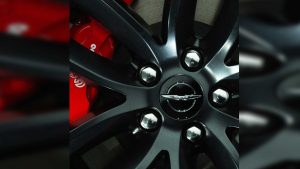
Because you don’t fix what ain’t broken.
Unless you’re the government, of course.
The Rest
The C comes standard with pretty much everything that is optional in the lesser trims, except all-wheel-drive (which is only available with V6 versions of the 300) as well as features and amenities you cannot get in other 300s, such as a four piston Brembo brake package, performance-tuned adaptive suspension, “active” exhaust (it opens up under full throttle to let the Hemi breathe and let everyone hear it breathe) with black tips, an integrated decklid spoiler on the trunk lid and Black Laguna leather seats with silver stitching and “300C” accents. 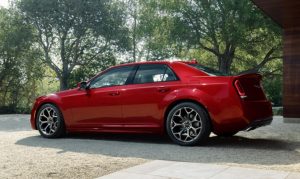
Also standard are a booming 19 speaker Harman Kardon audio system and carbon fiber trim plates.
Chrysler is taking reservations for these last-of-the-line, going-out-with-a-bang 300s. If you’re interested, click here.
The Bottom Line
Cars like this will be missed once they’re gone. We took them for granted. And now they’re being taken away. Maybe, one day, they’ll come back.
After we stop taking such things for granted.
. . .
If you like what you’ve found here please consider supporting EPautos.
We depend on you to keep the wheels turning!
Our donate button is here.
If you prefer not to use PayPal, our mailing address is:
EPautos
721 Hummingbird Lane SE
Copper Hill, VA 24079
PS: Get an EPautos magnet or sticker or coaster in return for a $20 or more one-time donation or a $10 or more monthly recurring donation. (Please be sure to tell us you want a magnet or sticker or coaster – and also, provide an address, so we know where to mail the thing!)
My eBook about car buying (new and used) is also available for your favorite price – free! Click here. If that fails, email me at [email protected] and I will send you a copy directly!


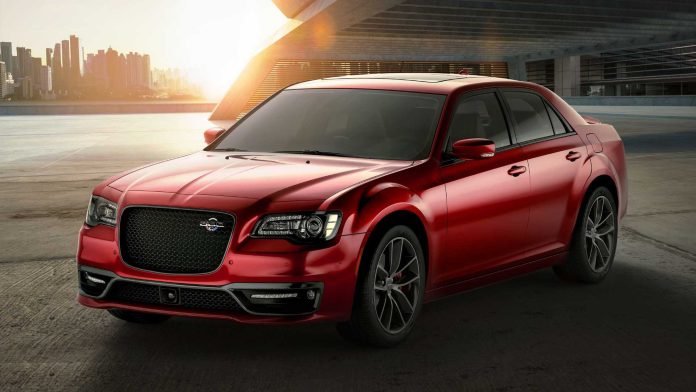

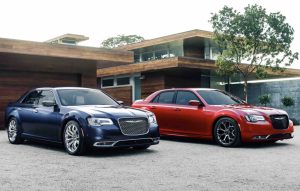
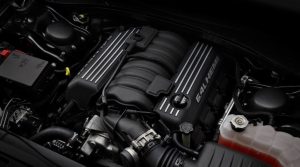










Eric, fascinating article. As I have become used to driving smaller Japanese sedans for some years, I have often thought it would be a blast to have a Chrysler 300 or perhaps a Ford Crown Victoria. In that connection, I sometimes wonder whether manufacturers retain the tooling for notable vehicles that are discontinued. If the manufacturers kept the tooling, hopefully some of these interesting cars could be revived without reinventing too many wheels. I for one do not think the EeeVee push will succeed. At some point, I suspect other manufacturers will follow Toyota’s lead and be more balanced with their ICE and EeeVee offerings. Hence the opening for a possible revival of sorts.
Hi Bill,
Thanks for the kind words! In re tooling: It’s often sold off after a manufacturer goes out of business or no longer needs it. Sometimes, it manages to survive. One can buy brand-new ’67-’69 Camaro bodies (and whole new ’64 Mustangs) but the price is daunting. Fun cars are becoming for-the-rich-only.
As planned.
2023 300 C is sold out already……
Still plenty of new, never sold 2018, 2019, 2020,2021, 2022 Chevy Bolts out there. Hmmmmm
I had the pleasure of owner a ’18 300S with the 5.7, RWD. The S was the slightly sportier version with black-out trim, sportier wheels (that became std. on ’20’s+), and a little rear wing. ohh, a sportier seat. Interior was OK, but not as fancy as the C version. I really enjoyed the car. I even autocrossed it for a little fun. Everyone at the track was entertained by the old man racing the old man’s car, until I turned the traction control and stability control off and literally lit them up all around track. So much fun…..
For a little ego, one of the pro-experienced guys rode with me and he said I kicked butt and only the stock all-season tires were holding back my times.
I probably should have kept it and mothballed it, because even my car with the V8-RWD-only is pretty rare. But I needed the trade value for my truck.
So I heard about this 6.4 tribute car a few days after it was announced, a couple months ago, and immediately went to order it, they were sold out.
Now maybe some dealer bought it, and I might get a second chance.
This is what your link says:
“ALL RESERVATIONS FOR THE CHRYSLER 300C HAVE BEEN MET
At this point in time, we are no longer accepting waitlist reservations due to overwhelming demand. Please visit chrysler.com to check out our other vehicle offerings.”
Hey Chrysler/Dodge!!!!!! make more!!!!!! cause no one’s going to buy your stupid EV versions
BTW, one of, if not the best cars I ever owned. Needing a big truck won out though.
Only the Park Ave and Caddy DTS rode better, but their performance with FWD paled in comparison to the 300.
Thanks for the memories Eric! That’s probably all we’re going to have soon.
Morning, Chris!
I’ll miss this one sorely. The Charger and Challenger, too. They are headed to Valhalla, to join my parents’ ’73 Olds 98 with the Rocket 455….
The beauty of cars, and articles like this to remind us, is that there are still old, classic cars available to purchase and preserve. But the supply is finite, and slowly decreasing annually. Like land, no more are being made, and the costs to buy, maintain and use are going up as the supply is dwindling. Get one or more while you still can!! I have 2 and am looking for more myself, so good luck!
when they kill off ice powered cars you will be stuck with this…..
EV owners say we don’t have to buy gas anymore….lol…..they might spend more for electricity recharging…..
Plus the EV costs about 30% more to buy……plus the $22,000 or more battery has to be replaced in 7 to 10 years….plus you will waste hours trapped in your EV waiting for it to charge…..plus 30% of the chargers are broken/don’t work….and often have long line ups of EV’s waiting to charge….and the lithium fire bomb batteries are very dangerous….and the electrical grid is down sometimes so there is no electicity to recharge….
ATTENTION: and 80+% of former ev owners say they will not buy one again…no wonder….
Man drives electric Volvo 350 miles to see REAL cost
the return trip had taken him 90 minutes longer than usual, because of time lost recharging…. and cost him nearly £40…$50.00 more.
350 mile trip
cost of electricity,diesel or gas for the trip….
EV electricity recharge cost 88.07 pounds…$108.89
55 mpg ice diesel fuel cost 50.24 pounds…… $62.12
45 mpg ice gas fuel cost 53.28 pounds…… $65.88
ATTENTION….he forgot to add in the battery usage cost….$22,000 battery might last 100,000 miles…that is $0.22 per mile x 350 miles = $77.00 added to the $108.89 electricity cost = $185.89 total cost….the diesel fuel costs far less at $62.12…
$22,000 for a battery to hold the electricity, (and it has to be replaced every 7 to 10 years or 100,000 miles), …lol….the gas tank in your car cost maybe $200.00 and will last a lot longer then the car …….and the lithium fire bomb battery is very dangerous….it is maybe the best reason not to buy an EV
https://www.mirror.co.uk/news/uk-news/man-drives-electric-volvo-350-28991522?fbclid=IwAR0PNwzZdlsSNdMnk2bLxDdx0tIWEGRfyeAY58J4L-fy7Yb2R_6fTJDgN2U
Ev’s make up less than 3% of vehicle sales after 15 years on the market (that is a huge market flop…lol),
“For once the 300 is gone, the only remaining Chrysler model will be the Pacifica minivan.
You can’t maintain an entire brand – or dealer network – on the strength of just one model.”
Okay, but every Chrysler dealer I see is listed as “CDJR”, meaning Chrysler/Dodge/Jeep/Ram. Are there any standalone Chrysler dealers left out there?
Probably not, as Chrysler has had few models for a number of years already. Dodge dealers for the most part can’t be standalone anymore either (though Dodge dealers would be by default RAM dealers).
Buick for the most part only has one model left too. Just a couple not very different also ran crossovers. It’s not a good time to be a car dealer and its only going to get worse. Friends of my brother recently sold their almost hundred year old Ford dealership. They didn’t see much of a future with it anymore. At least it sold to another guy with only one Chevy dealership, so at least it didn’t land in the hands of a lame big dealership group.
Something good came out of Mercedes owning Chrysler….the 300 First generation (2005–2010) it shared design and components with Mercedes……
Mercedes executives also confirmed that several individual components of the car are derived from the Mercedes-Benz E-Class (W211) and S-Class of the era.[18] Shared and or derived components from Mercedes-Benz included: the 3.0L OM642 turbo-diesel V6 used in overseas markets,
the rear suspension cradle and 5-link independent rear suspension design derived from the E-Class, a double-wishbone front suspension design with short-and-long arm front suspension geometry derived from the Mercedes-Benz S-Class (W220). Components from the suspension such as the lower control arms were borrowed from the E55 AMG and have been verified by independent mechanics as being able to be interchangeable between both cars.
Additionally, the 5-Speed NAG1 W5A580 transmission, rear differential, driveshaft, ESP & ABS systems, steering system, the CAN Bus electrical architecture, cabin electronics including several other electronic and engine modules were shared with the Mercedes-Benz components.
Further, switchgear such as the cruise control and turn signal combination stalk, seat controls, seat frames, HVAC system(s), and the wiring harness were utilized from Mercedes-Benz components.
Later model years also feature a Mercedes-Benz-derived laser key ignition system in place of the traditional metal key. The AWD models also benefited from the use of Mercedes-Benz’s 4MATIC system, including transfer case components.
Close to a Mercedes sedan at a lower price….a great deal….
2005 Chrysler 300 was almost the same as the Mercedes E class but at a lower price…a great value….
2005 Chrysler 300 … $23,405 – $29,405 MSRP
2005 Mercedes-Benz E-Class $48,500 starting MSRP
” Bus electrical architecture, cabin electronics including several other electronic and engine modules were shared with the Mercedes-Benz components.”
Given that German electrics are barely one step above Lucas, that’s not exactly reassuring.
About the only good thing that came from Mercedes owning Chrysler. For the most part it was a disaster for Chrysler. Mercedes sucked the cash Chrysler had for its own use and left it with basically nothing.
It’s probably the number one reason Chrysler has very little in the way of models currently and in the future. Wasting money on developing electric Chargers and Challengers isn’t helping matters any either.
Another piece of the America I know is about gone. I remember in the 80’s when auto manufacturers were free (compared to today) to build for customer needs and wants. It seemed like in those years at the start of the new model year, there was heightened expectations as to what was going to be offered and people were rarely disappointed. We had Z-28’s, real Supras made by Toyota, 280-Z’s, etc. Turbos were considered exotic at the time and being able to change your own gears while driving was common and fun. Car styling was picked and chosen according to one’s personality and they were very abundant. Today, everything looks like everything else. Manuals are about nonexistent; so fun driving is about gone. So is popping up the hood to look at the different engines. To sum it up, in the “Land of the Free”, government has killed off choices and fun. GOD forbid if anyone has any happiness and fun or a law will be passed to eliminate that too!
When I was in high school in the early 1970’s a friend and I took a 413 cross ram from a Chrysler 300 and put it in a Dodge Dart as a drag car. It was a great time to do things like that, lots of options for teens with limited budgets and a box full of wrenches.
Hi Dave,
That was my experience in the ’80s as well. Only 40 years have gone by – and in that blink of an eye, the whole country has changed into another country…
I always saw it as something old people drove. Except now that I’m “old” I can see why it was appealing over the years.
16 spark plugs is not enough. Those plastic valve cover looking things are nice pieces of plastic. It will surely go up in value when it becomes an antique in 50 years. Buy it and store it as the last hemi that will ever need a new head gasket.
Reservations are closed, says Chrysler’s site at the link above.
Weirdly, technical [sic] specs don’t even mention the transmission. One has to go schlepping round the interwebs to suss out that it comes with an 8-speed Torqueflite. *yawn*
With nothing left but Pacifica minivans, Chrysler soon will join Plymouth, Pontiac, Oldsmobile and Saturn in the automotive graveyard. *yawns again*
Why do they even bother putting out these limited-edition, last-stand collector editions? Feels like a mockery of the plebes who will never get to have one.